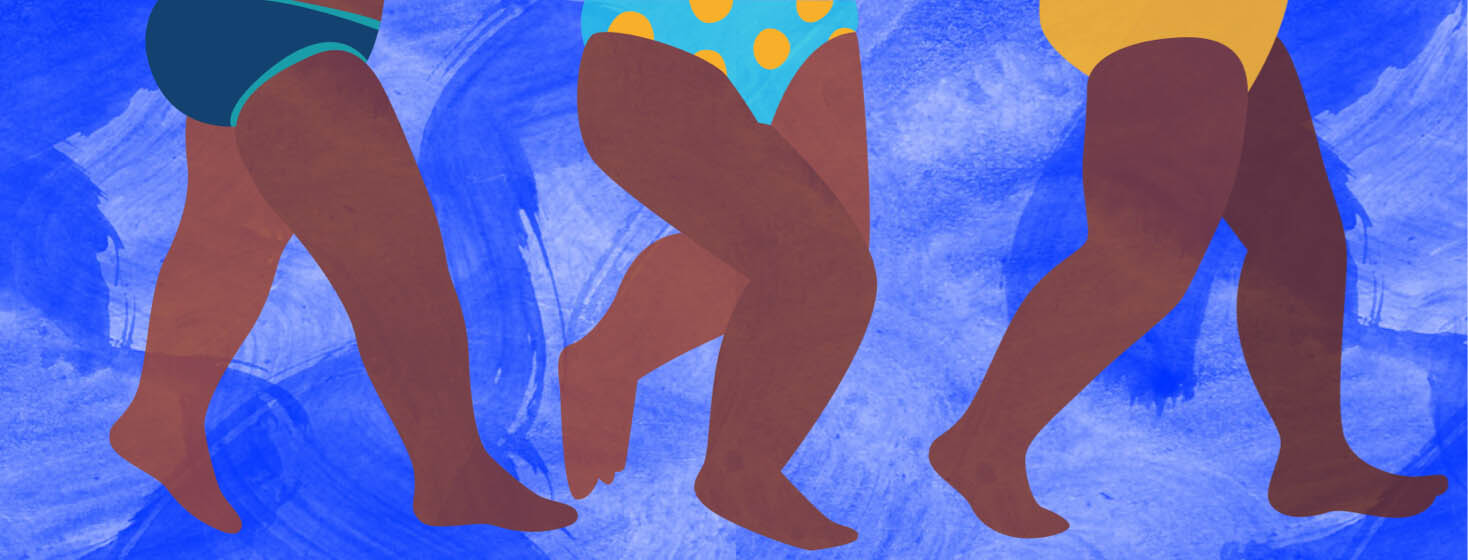Let's Water Walk and Beat The Joint Pain
Are you going through excessive joint pain and swelling because of psoriatic arthritis? Well, let’s get up and water walk. Like all water exercises, water walking is easy on the joints. The water’s buoyancy supports the body’s weight, which reduces stress on the joints and minimizes pain.
Let's break down water walking.
I had the pleasure of trying water walking. It felt different at first - I almost felt like I was being pulled back. Truthfully, I had some pain in the beginning. Water walking is a relatively easier exercise as water takes away your worries of falling.
Featured Forum
View all responsesWhat are some other benefits of water walking?
- Working out in water can help improve cardiovascular fitness, balance, and range of motion.
- Heated pools – typically 82 to 88 degrees – can help soothe pain. Cooler temps might not make your joints feels as good, but you’ll still reap the workout’s benefits.
- Water also has greater resistance than air, which means walking in water requires more effort and ultimately burns more calories than walking on land.
Why water walk instead of a simple walk?
Well, there are several reasons for that. First, your body is supported by the water’s support, and it reduces the impact of walking on your joints. Secondly, as compared to air, water offers more resistance and resultantly your muscles must put in more effort to face the resistance. More muscle effort means stronger muscles.
In addition, if your water walks in warm water or a heated pool, the warm water will help to soothe the stiffness and pain in joints.
What is the appropriate level of water?
Walk-in deep-level water that is up to your chest. When you go in the water, try different depth levels, and see which depth suits you and supports pain-less water walking. If you want zero-gravity pressure on your joints, try going in deep water and walk where you do not touch the bottom at all.
To feel comfortable in deep water, prefer wearing a floatation belt or vest.
How much water walking is too much?
There is no definite answer to this because it depends on individual needs and strength and be mindful of how much your body can bear. For the start, you can begin with one to three sets of each type of water exercise up to three times a week.
The duration for one set may range from 30 to 60 seconds. The four types of water movements include forward walk, backward walk, up and down crunches, and walking on toes.
Tips for your first water walk
If you are new to this exercise, the first thing to focus on is your body’s stability. Focus your concentration on keeping the shoulders back and stomach tight. Avoid leaning forward or backward in an effort to push your body forward in the water.
Are you wondering what to do with your hands and feet? Walk as you walk on land. Move your right hand forward while moving your left leg forward. Keep trying different techniques. When you gain stability in water, try walking on your heels or toes. Move forward and then try coming backward again.
While walking in water, try putting your toes on the ground first as putting heels first may lead to foot pain.
Start a Forum
Other things to keep in mind
In addition, keep in mind that at the initial stages, water walking can result in sore joints, and this is quite normal. Usually, it takes about six weeks to build muscle strength. Water exercise also demands patience. So, be patient, strong, and consistent when you begin this exercise.
I am sure my psoriatic warriors have all the courage, strength, and patience to begin and continue this exercise for the better good. Let’s do this together.

Join the conversation